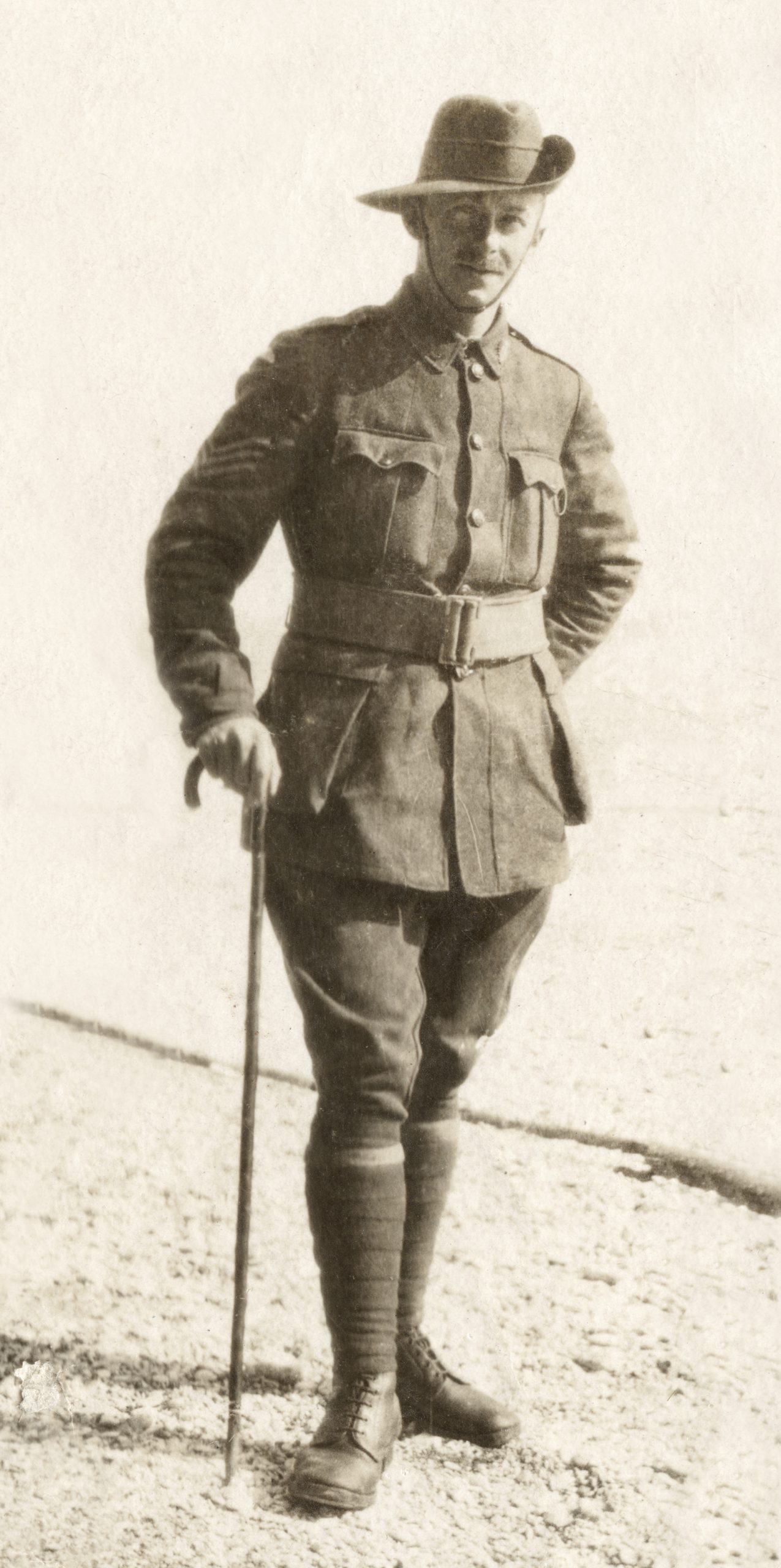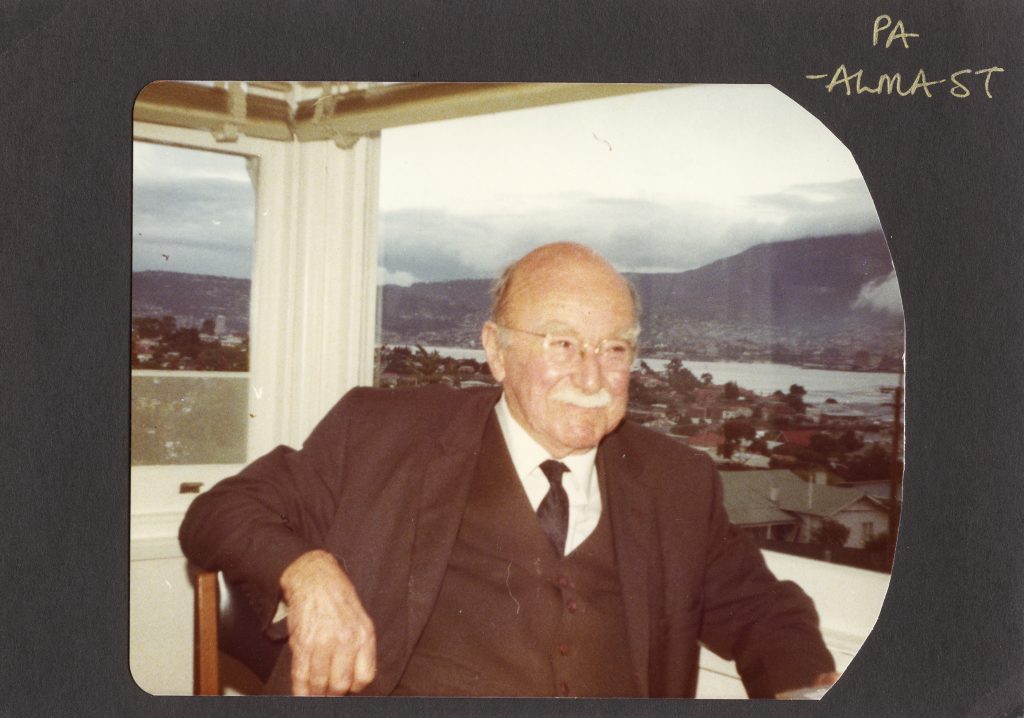Tasmanians in World War 1: Ernest Roy Pretyman

Ernest Roy Pretyman might have lived out his whole life in Tasmania if it were not for the war. Instead this accountant travelled to France, fought and was wounded, and attained the rank of Sergeant before returning home to Hobart. His was an active mind, and in pursuit of his interests and hobbies he left a significant legacy to Tasmania’s heritage.
Soldier, collector, amateur historian

Ernest Roy Pretyman, known as Roy, was born on the 17th of August 1892, the son of Ernest Henry Pretyman, an accountant and Tasmanian Auditor-General 1916-1937, and Alice Pretyman, of 133 King Street, Sandy Bay.
Roy attended Miss Harris’s kindergarten in Davey Street, Hobart, a school run by sisters Eleanor and Lily Poulett-Harris, King’s Grammar School at Boa Vista, off Argyle Street in North Hobart, and the Hutchins School in Macquarie Street, Hobart.
Roy left school at 16, starting work as a clerk with the Government Railways. Roy soon joined the Hobart Savings Bank, later the Savings Bank of Tasmania, where he completed his accountancy qualifications, and worked until retiring in 1956.
Roy enlisted in the AIF, the Australian Imperial Force, on the 20th of December 1915. While training in Australia he was made a corporal, proceeding overseas to France on the 23rd of November 1916. Roy was made a temporary sergeant in France before being evacuated to England, wounded, on the 2nd of January 1917. After recovering in England, Roy was promoted to a full sergeant in April 1917, and later transferred for duty, in England, with a training battalion on the 2nd of October 1917.
Roy was sent again to France on the 17th of April 1918 and was wounded in action for the second time, on the 1st of May 1918. It was a serious wound, to his right thigh. Roy was invalided back to England on the 7th of May 1918. After initial recuperation Roy was evacuated to Australia on the 30th of June 1918, where, after discharge he returned to work. Roy spent eighteen months on crutches recovering from the wound.
Roy had many interests during his life. He was a well-known amateur historian and foundation member of the Tasmanian Historical Research Association, a member of the Nomenclature Board and Royal Society of Tasmania, and served on the Board of Trustees of the Narryna Heritage Museum.
Roy had an aptitude for repairing things and after retiring, repaired many of the things he had collected over the years, including typewriters, accounting machines, dictaphones, phonographs, musical boxes and early record players. Roy knitted his own socks using an antique sock knitting machine he had collected along the way.
Roy played piano, owning a baby grand piano, which he kept in the front room of his home in Braddon Ave, Sandy Bay. He owned a claviola too, which could be attached to the grand piano, and as an accomplished musician was able to punch the rolls for it.
Roy’s collecting interests included information about Tasmania’s history, which he kept on cards, originally in aluminium cake tins. He also collected stamps and coins, photographs, and a remarkable collection of shells.
Roy’s varied interests have and will help inform us all about Tasmania’s history. The Pretyman family have donated much of the family archive, a donation that has become a valued inclusion in our collections.

A significant contribution to Tasmania’s heritage is the E R Pretyman index to Tasmanian place names, born as a result of Roy’s passion for collecting snippets of information related to Tasmania’s history.
Perhaps Roy’s greatest contribution to Tasmania’s historical record is his collection of photographs. The collection includes a variety of photographs and negatives. Of special interest is Pretyman’s collection of glass plate negatives, many digitised and available through the our website. The dates of the photographs range from the 1870’s to the 1930’s, although several have earlier dates reflecting the dates of the original photographed paintings. The collection reflects the historical period in which they were taken, a rich legacy now and for the future.
Some of E R Pretyman’s high quality photos from our Flickr gallery
Ernest Roy Pretyman, who was thought of as a sickly child, lived a very long and full life by any standards. He contributed much to the development of Tasmania during his life, making a major contribution to its historical record.
He passed away on the 3rd of December 1985 aged 93.


